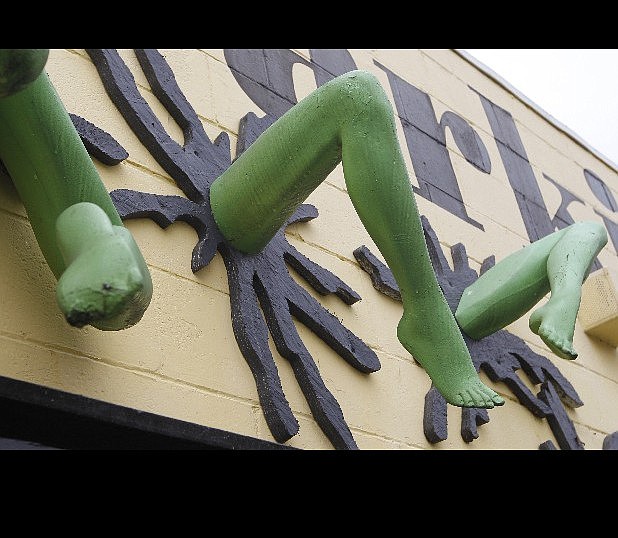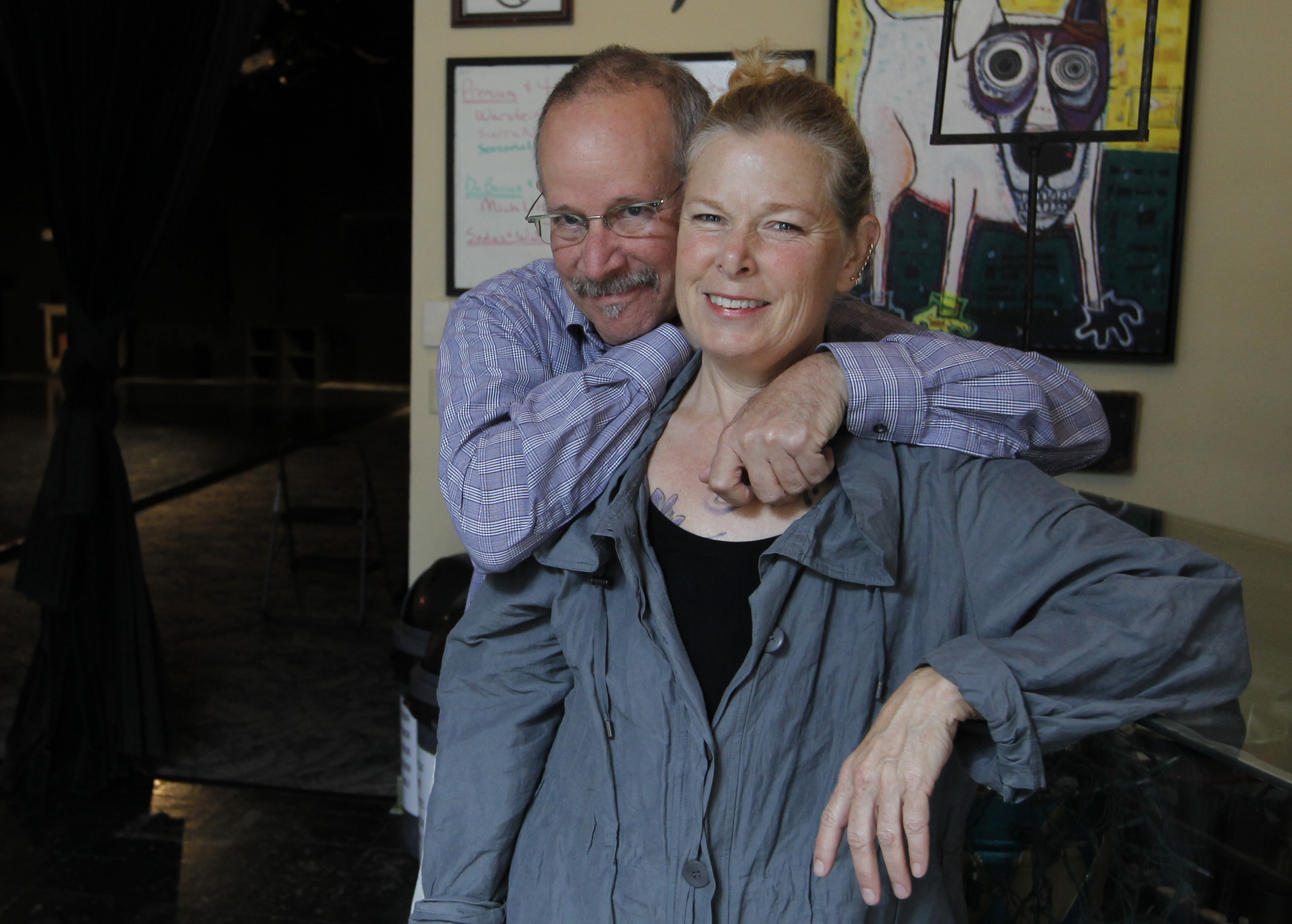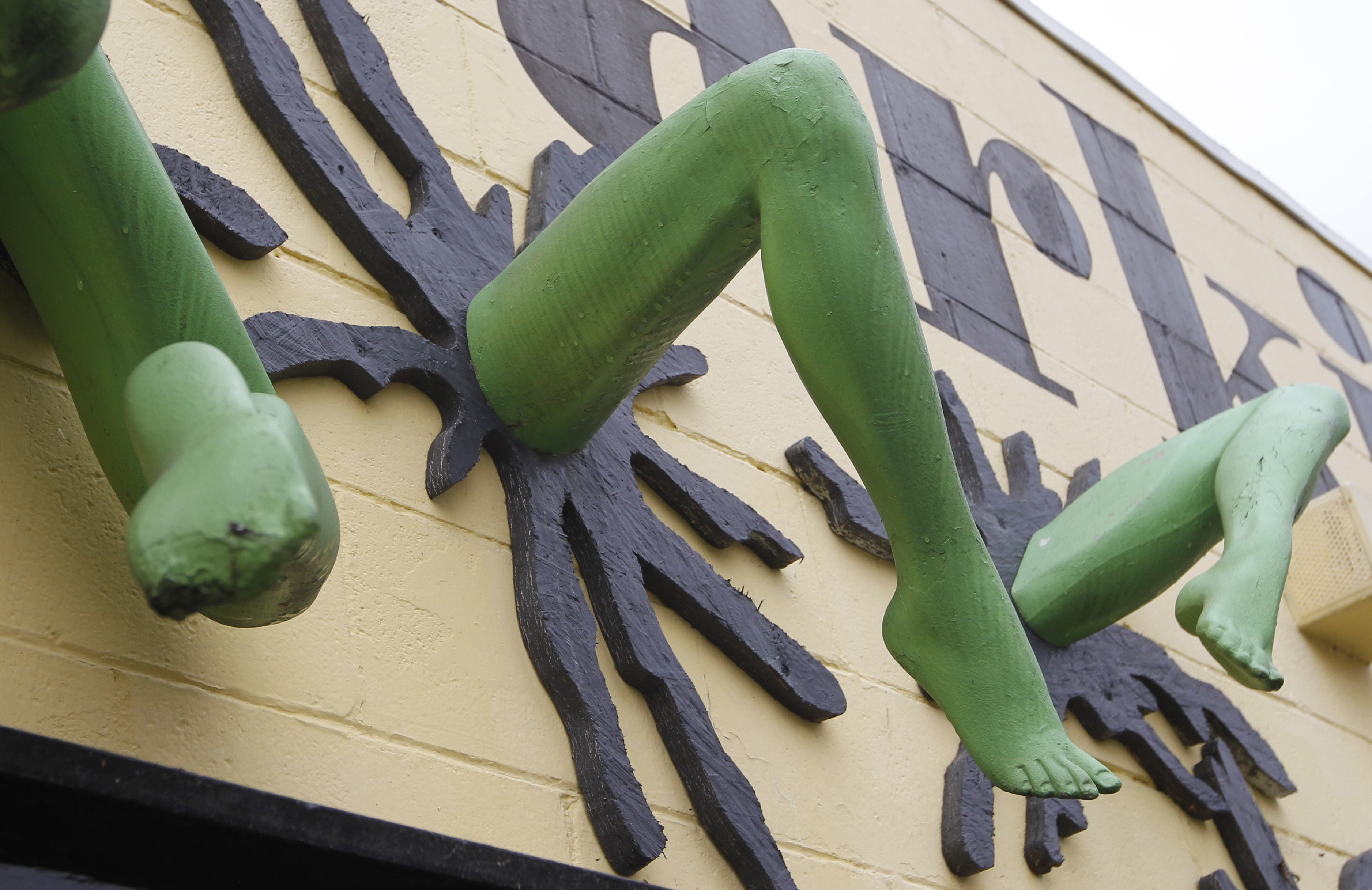Barking Legs theater spent two decades pushing boundaries, challenging convention in Chattanooga
Friday, November 1, 2013
BREEDS OF BARKThe list of artists who have appeared at Barking Legs Theater in the last 20 years is full of nationally well-known performers. Here are a few:Andrew Bird: Indie singer/songwriter and multi-instrumentalist, formerly a member of Squirrel Nut Zippers.Col. Bruce Hampton: Atlanta-based band leader of jazz rockers, Aquarium Rescue Unit, The Quark Alliance and The Late Bronze Age.Norman and Nancy Blake: Grammy-winning Americana/bluegrass husband and wife duo.Jeff Coffin: Saxophonist/clarinetist with Dave Matthews Band, formerly of Bela Fleck & the Flecktones.Gill Landry: Singer/songwriter/guitarist and member of Old Crow Medicine Show and The Kitchen. Syncopators.Noam Pikelny: Grammy-nominated banjo player with Punch Brothers, formerly of Leftover Salmon and John Cowan Band.Junior Brown: Alt-country guitarist and singer with session credits with The Beach Boys, George Jones and Stone Temple Pilots.Matthew Shipp: Free jazz pianist.Allison Brown: Grammy-winning bluegrass/jazz banjo player.John Cowan: Front man of John Cowan Band, formerly vocalist with New Grass Revival.Beppe Gambetta: Italian flatpicking virtuoso.
MORE INFOFind out more about Barking Legs Theater, at 1307 Dodds Ave., including a complete list of events scheduled during its monthlong 20th anniversary celebration, by calling 624-5347 or visiting Barkinglegs.org.
From punk bands and free jazz ensembles to nationally renowned dance companies and flatpicking guitar legends, the performers who have graced the stage at Barking Legs Theater in the last 20 years represent a broad range of artistic styles.
In a single week, the Dodds Avenue venue could host a screening by local cinema aficionados Mise En Scenesters, a concert by a touring bluegrass quartet and end with an all-call jam session for teenage performing artists.
The diversity of that programming is a strong indication that the theater is doing what it was always intended to do, says choreographer and dance educator Ann Law, who co-owns the venue with her husband, neurologist Dr. Bruce Kaplan.
"When I go to the Tivoli [Theatre], I expect certain types of performances there. When I go to the [Chattanooga] Theater Centre, I expect a certain performance there," the 56-year-old Law says. "But at Barking Legs, man, talk about the flow.
"It's always a surprise. Always a really pleasant surprise."
Throughout November, Barking Legs will celebrate 20 years of pushing the artistic limits with a schedule of events including concerts by some of the first musicians to perform there and productions by some of the theater's most frequent collaborators.
FIXING THE ROOF, RAISING THE CURTAIN
On Nov. 20, 1993, Barking Legs hosted its first event, a 20-act showcase of local talent, including jazz musicians and contemporary dance troupes. But that evening's downbeat was years in the making.
In the late '80s, Law and Kaplan were living in New York City; he was conducting neurological research at Cornell Medical Center; she was working as a choreographer, dancer and part-time caterer. They became interested in Chattanooga after meeting local musicians Bob Stagner and Dennis Palmer, co-founders of The Shaking Ray Levis, an internationally renowned experimental duo.
In November 1990, a job opened up at a Chattanooga medical practice, so they relocated. It was a decision motivated, in part, by the Shaking Rays, Kaplan says.
"Even then ... they had a reputation that was worldwide, and it was clear that they were doing things in Chattanooga that were quite exceptional," the 58-year-old says.
Two years later, Law was working at Dance Theater Workshop, a Barton Avenue studio, when she founded a nonprofit, Contemporary Performing Arts of Chattanooga, and began organizing and seeking grants to pay for her own dance projects and other productions.
Eventually, Law became dissatisfied with seeking other venues in which to present her work and began looking for a building in which to open her own studio. Despite an exhaustive search, the feature she most needed, a roof supported by a grid rather than by pillars, proved elusive.
With mounting frustration, she was ready to set up shop just about anywhere when she found what she needed in a dilapidated, long-abandoned drapery store with holes in the roof and six inches of dirt in the basement.
"I realized when we found [the Barking Legs building] that it didn't matter to me in the least where it was located," Law says. "What mattered was that I found a place to support the work that I thought was so important to the city."
Others thought she could do better.
Some warned that the neighborhood on Dodds Avenue was too dangerous. Law's fellow dance educators from Girls Preparatory School and Center for Creative Arts visited the prospective location and shook their heads. A local handyman took one look at the basement and dubbed it, "one big J-O-B," Law says, laughing.
Even Stagner had his doubts.
"I remember thinking, 'Do you really know what you're getting into?'" he recalls.
Kaplan says the building's saving grace was probably that its construction materials -- primarily galvanized steel and concrete blocks -- were "so simple they couldn't be ruined." Besides, coming from New York, where performances often took place in basements or other cramped venues, a dirty floor and missing roof were practically non-issues.
"The space, for that purpose, seemed generous, if not opulent," he says. "Maybe our eyes were a little more open to that possibility than they would have been had we been long-time Chattanoogans. When people come here from New York or Philly or places like that, they can't believe how much space we have."
For 2-1/2 months, Law and local sculptor Rick Booth worked 12- and 14-hour days to transform the space into a suitable venue for Law's performances. They filled countless dumpsters in the process, and Law says she became a fixture at the Environmental Protection Agency, where she was constantly asking questions about the toxicity of various materials they found during the cleanup.
A BALANCING ACT
With the grand opening complete, Law set to work presenting performances at Barking Legs that often challenged conventions and conservative values.
One of the earliest of these "social art" performances was "Tom and Sally," a dance/theater retelling of the relationship between Thomas Jefferson and his slave mistress Sally Hemings. Another, "The Bible Belt and Other Accessories," was a solo performance that "attack[ed] homophobia with humor."
"We were doing queer art in 1993," Law says. "We were doing nudity on stage in 1994. We were doing racial work early on. We've really watched Chattanooga grow through these 20 years. We've grown with it, to a certain degree, and we've pushed it as well."
In 1999, the theater hosted "Shirts and Skins," a performance about growing up gay in America by Tim Miller, a Californian performance artist and one of the so-called "NEA Four," whose grant from the National Endowment for the Arts was vetoed in 1990 based on its subject matter. The performance was the only time Kaplan says he recalls protesters -- mostly from area churches -- picketing a Barking Legs event.
The theater's greatest contribution to Chattanooga, Stagner says, is that it provides a stage to fringe artists who otherwise might not have been able to perform here.
"Barking Legs is a true testament to artistic integrity in this community," he says. "They [Kaplan and Law] have given so many people a chance to do something when other places would say 'No.'"
The unconventional aspects of Barking Legs aren't limited to the programming. Practically everything about the theater exudes quirk, from the lime-green mannequin legs affixed to the entryway ceiling to the gallery filled with rows of cushioned chairs rescued from a movie house in Fort Payne, Ala. Even the name, which is derived from Frank Zappa's record label, Barking Pumpkin, is an homage to bold and unconventional art.
"What's been so wonderful is that we've always had the freedom to nurture it as its own place, a place where work was happening that wasn't happening anywhere else," Law says.
By the late '90s, however, her interest began to shift from presenting the work of other artists to becoming more involved in developing dance education programs at area schools. Law's final performance was "Forget Hell!" a multi-discipline showcase in 2001 featuring local artists' interpretations of the Civil War.
CHANGING TUNES
As Law began to turn her attention elsewhere, Kaplan stepped into Barking Legs' programming void, shifting the theater's focus from performance art toward his own burgeoning interest in traditional acoustic music.
In 1997, he and local musician George Bright were visiting the Cherokee National Forest when Kaplan brought up that he wanted to feature more concerts at Barking Legs. The two joined forces and founded Flying Fingers Productions, a programming arm that -- early on -- primarily booked shows by bluegrass and acoustic musicians.
The first Flying Fingers performance that fall was by Grammy Award-winning guitarist David Grier, who will return to the theater Wednesday as part of the Helen Highwater Stringband. His band mates in the group -- Shad Cobb, Missy Raines and Mike Compton -- all have performed at Barking Legs numerous times.
"A lot of these folks wouldn't have come to Chattanooga if Bruce hadn't had that idea while we were up hiking," Bright says. "We used to always sweat attendance, but the crowds got better and better."
With the exception of a new sound booth built in 2010, the installation of a 1916 Steinway baby grand piano and a steady stream of improvements to the theater's audio equipment, the theater has remained relatively unchanged in the last 20 years.
The artists who have played Barking Legs say any improvements would be mostly unnecessary. They praise the venue's acoustics and say they feed off the energy of being so close to listeners, the most distant of whom sit no more than 20 feet away. On especially popular nights, the crowd may even spill onto the stage, which doubles as a dance floor for the theater's increasingly crowded schedule of dance classes.
"That [closeness] just makes you feel at ease," says Compton, who has performed at Barking Legs about six times. "I don't think I've ever been there when there wasn't some dialogue between the stage and the seats."
Although the theater's earliest musical offerings included some of the biggest names in acoustic and bluegrass music, Kaplan has sought in recent years to embrace other genres, including an increased emphasis on experimental music and jazz.
Throughout its history, the theater has partnered with other arts organizations, such as The Shaking Ray Levi Society, Art Front Productions and The Creative Underground, who serve as co-presenters. Barking Legs' six-member board of directors consists of the theater's co-owners and representatives from these groups.
Law and Kaplan say bringing other people into the fold and offering them input into the programming decisions has dramatically shaped the theater in recent years. Looking at the diversity of shows these partnerships have generated, Law says, it's clear the theater is living up to the goal they set 20 years ago of invigorating the local arts community.
"I was trying to find rehearsal space for next week, and I can't even find rehearsal space in my own house," she laughs. "That's a really good thing."
Contact staff writer Casey Phillips at cphillips@timesfreepress.com or 423-757-6205. Follow him on Twitter at @PhillipsCTFP.


